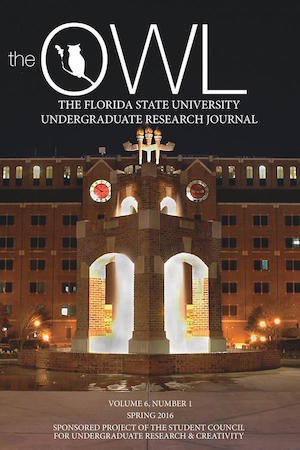CRISPR-Cas9 Utility in Genome Engineering
Keywords:
epigenetics, macrosatellite, FSHD, gene regulationAbstract
The field of genomic engineering and manipulation has made great strides in recent years in the developing techniques to alter the genome to alleviate disease by flexing control on an epigenetic scale. Facioscapulohumeral muscular dystrophy (FSHD) poses a series of points in its pathophysiology to examine the utility of these manipulation techniques. This paper specifically focuses on how three approaches can be applied to ultimately stop the expression of the full length double homeobox 4 DUX4 gene transcript which is thought to be responsible for the upper body muscular atrophy exhibited in most FSHD cases. With this information, we can surmise what the future holds in terms of our thoughts on the purpose of repetitive DNA, the role of epigenetics in disease, and how to apply new genetic engineering techniques in creative ways.
References
Rath, D., Amlinger, L., Rath, A., & Lundgren, M. (2015). The CRISPR-Cas immune system: Biology, mechanisms and applications. Biochimie, 117, 119-128.
Ran, F., et al. (2013). Double Nicking by RNA-Guided CRISPR Cas9 for Enhanced Genome Editing Specificity. Cell, 154, 1380-1389.
Emery, A. (2008). Muscular Dystrophy: The Facts. New York: Oxford University Press, Inc.
Chadwick, B.P. (2008). DXZ4 chromatin adopts an opposing conformation to that of the surrounding chromosome and acquires a novel inactive X-specific role involving CTCF and antisense transcripts. Genome Research, 18, 1259-1269.
Richards, M., Coppee, F., Thomas, N., Belayew, A., & Upadhyaya, M. (2012). Facioscapulohumeral muscular dystrophy (FSHD): an enigma unraveled? Human Genetics, 131, 325-340.
Ottaviani, Alexandre et al. (2009). The D4Z4 Macrosatellite Repeat Acts as a CTCF and A-Type Lamins-Dependent Insulator in Facio-Scapulo-Humeral Dystrophy. PLOS Genetics 5.2, 1-9.
Das, S., and Chadwick B.P. (2015). Epigenetics: Current Research and Emerging Trends. United Kingdom: Caister Academic Press, 217-254.
Tanenbaum, M., Gillbert, L., Qi, L., Weissman, J., & Vale, R. (2014). A Protein-Tagging System for Signal Amplification in Gene Expression and Fluorescence Imaging. Cell, 159, 635-646.
Perkel, J. (2014). Here Comes the SunTag. Retrieved from http://www.biotechniques.com/news/Here-Comes-the-SunTag/biotechniques-355351.html#.VkNvZ1QrKUk
Himeda, C., Jones T., & Jones, P. (2015). CRISPR/dCas9-mediated transcriptional inhibition ameliorates the epigenetic dysregulation at D4Z4 and represses DUX4-fl in FSH muscular dystrophy. Molecular Therapy accepted article preview online 03 November 2015; doi:10.1038/mt.2015.200
Volpe, Thomas et al. (2002). Regulation of Heterochromatic Silencing and Histone H3 Lysine-9 Methylation by RNAi. Science, 297.13, 1833-1837.
Zeng, Weihua et al. “Specific Loss of Histone H3 Lysine 9 Trimethylation and HP1γ/Cohesin Binding at D4Z4 Repeats Is Associated with Facioscapulohumeral Dystrophy (FSHD).” PLOS Genetics 5.7 (2009): 1-14. Online.
Downloads
Published
Issue
Section
License
All works published in The Owl are published under a Creative Commons Attribution, Non-Commercial, Share-Alike (CC-BY-NC-SA) license. The author retains copyright.

